ISSUE: JANUARY 2008 | VOLUME: 34:01
Relief for Worst RSD May Lie With Ketamine Coma
LAS VEGAS—For the most severe cases of reflex sympathetic dystrophy (RSD), inducing a five-day coma may be the only effective treatment. The method is akin to rebooting the central nervous systems of patients whose nerve cells have gone haywire. The FDA has yet to approve coma therapy, which is induced by For the better part of four years, Robert Schwartzman, MD, chairman of the Department of Neurology at Drexel University College of Medicine in Philadelphia, and Anthony Kirkpatrick, MD, PhD, an anesthesiologist at the University of South Florida College of Medicine in Tampa, have been studying the effects of ketamine treatment, including induced comas, in patients with RSD. Their results suggest that the coma therapy may provide long-term and perhaps permanent relief in as many as half of the most severe cases. Ketamine first won FDA approval in 1970 as an anesthetic. It quickly became known on the street as “Special K,” a powerful hallucinogen Potent Agent Ketamine is the most potent clinically available inhibitor of N-methyl-D-aspartate (NMDA) receptors. These receptors permit the transfer of electrical signals between neurons in the brain and the spinal column. Studies support the idea that RSD results from a dynamic change in the physiology and structure of central pain neurons mediated by NMDA receptors. When these receptors malfunction, enzymatic and metabolic cascades occur in pain cells, and the degree of pain is magnified out of proportion to the physical injury causing it. In a study of infusions of low-dose ketamine (Pain Physician 2005;8:175-179), Dr. Schwartzman and colleagues found that a critical factor in central sensitization seems to be the release of magnesium on the NMDA receptor, with an influx of calcium and the initiation of intracellular cascades. As an NMDA antagonist, ketamine blocks central sensitization. Drugs such as dextromethorphan, amantadine and memantine (Namenda, Forest Pharmaceuticals) also could be used, but they appear to have a low potential for blocking the sensitization process. Ketamine has long been known to be able to prevent RSD/CRPS “If it [ketamine] can prevent CRPS, the thought was, ‘can we use it to treat it?’ ” said Dr. Reuben, who serves as an adviser to the Mexico study. “This is just the stepping stone. Unfortunately, all we have are case reports and retrospective studies. We need prospective studies.” Only the Worst Patients RSD affects between 200,000 and 1.2 million Americans, according to the Reflex Sympathetic Dystrophy Association. The disorder develops without any apparent explanation in 1% to 2% of patients with fractures and in 2% to 5% of patients with peripheral nerve injuries. The RSD group claims that roughly 50,000 new cases develop each year. For the Mexican and German research, doctors chose patients with the most severe cases of RSD who had tried everything—including blocks and hyperbaric chambers—for their pain. Of the roughly 200 to 300 new patients with RSD whom Dr. Kirkpatrick sees each year, fewer than 5% are so unresponsive to conventional therapies that they are considered for treatment with a ketamine coma. Those who are eligible can barely endure even the most innocuous sensations, Dr. Kirkpatrick said. Patients report feeling pain at the slightest touch, from a dog’s wagging tail to air flowing over the skin. One patient lived in a box because it hurt her to wear clothes. “Some of these patients,” Dr. Kirkpatrick said, “are about ready to die.” Frustrated physicians from around the world refer patients to Drs. Kirkpatrick and Schwartzman. “I only see the worst patients,” said Dr. Schwartzman, who took on the challenge of RSD after being unable to cure one of his patients with the condition. “Some have gone through up to 100 doctors.” Failure in More Than Half Dr. Schwartzman has sent a total of 38 patients to Germany for treatment with the ketamine coma, which was discovered serendipitously by Ralph-Thomas Kiefer, MD, and Peter Rohr, MD, in Tübingen. The two physicians had induced a coma in a patient with RSD and severe head trauma. When the patient awoke, the pain syndrome had vanished. The five-day coma is induced with large bolus injections of ketamine (1-1.5 mg/kg) and midazolam (2.5-7.5 mg). The coma is maintained with infusions of ketamine (3-7 mg/kg per hour) and midazolam (0.15-0.3 mg/kg per hour), which are tapered toward the end. Every patient in whom a coma is induced does well initially, Dr. Schwartzman said, but the pain returns in 55% to 60% of cases. Still, of the 38 patients treated in Germany, at least 12 have had minimal or no pain for more than five years. Three of the 12 required occasional subanesthetic boosters of ketamine. “We’re blocking the RSD,” Dr. Schwartzman said. “The maintaining thing is still there. If you don’t block the maintaining problem, the same molecular genetic cascade occurs.” A study of the full ketamine coma in the patients treated in Germany will soon appear in Pain Medicine. Of the 20 patients featured in the study who underwent the therapy, 16 experienced complete remission lasting at least six months. “While the trial suggests improvements in pain reductions,” the researchers concluded, “a randomized controlled study will be necessary to prove its efficacy.” The coma’s side effects—precipitous weight loss, sleep disruption, anxiety, weakness and the usual complications of critical care medicine—are potentially serious. The bottom line, Dr. Schwartzman said, is that “the procedure has proven to be very safe but clearly has inherent risks.” South of the Border Dr. Kirkpatrick has embarked on a study in Mexico with a protocol similar to that used in the German study; he sends his patients to the San José Technological Hospital, affiliated with the Tec de Monterrey School of Medicine in Monterrey, Mexico, a few hours’ drive from the Texas border. Leading the Mexican medical team is Fernando Cantu, MD, an anesthesiologist and specialist in pain management who was trained at the University of Texas. The study was originally approved in the United States by the institutional review boards of the University of South Florida and Tampa General Hospital, but the FDA refused to grant an exemption to its international new drug application. Rather than embark on a process that would likely cost $3 million and delay treatment for their patients, Dr. Kirkpatrick and his colleagues moved the study to Mexico. A review board in Monterrey also approved the study. So far, eight patients have been treated in Mexico. The main difference from the German study is that pain thresholds are measured with a force gauge. The German study relied on self-reporting. Low-Dose Conscious Sedation A less dramatic treatment option for severe cases of RSD is a subanesthetic infusion of low-dose ketamine (10-30 mg per hour titrated according to side effects such as amnesia, blurred vision and vomiting). Dr. Schwartzman has performed close to 200 of these—about one each week for the past four years—at Hahnemann University Hospital in Philadelphia. The treatment costs about $10,000, and insurance companies will not pay for it. Dr. Schwartzman estimated that he performs 95% of all such procedures in the country. He also treats about 10 outpatients per week with lower doses in his clinic. The infusions succeed in 70% to 80% of cases. But even in the most responsive patients, pain typically returns after approximately six months. A study published in Pain Medicine (2004;5:263-275) found similar results. A two-hour infusion of low-dose ketamine can also be used to manage RSD or as a booster after treatment with the coma. Pretreatment with 0.2 mg of I.V. glycopyrrolate (the only other drug needed) is administered along with a ketamine drip at 100 mg per hour, supplemented with 5- to 40-mg I.V. bolus injections of ketamine. An average adult will require a total of 400 to 600 mg of ketamine over a two-hour period. For patients with the most intractable cases of RSD, the full coma treatment may still be the only hope. In a study published online in Pain Medicine in July 2007 (online early article), Dr. Schwartzman and his German colleagues found that an “awake” version of the ketamine infusion at higher doses (50-500 mg per day) over a 10-day period in four patients with extreme RSD did not relieve pain. Cause for Optimism Shannon Stocker, MD, an Orlando, Fla., RSD patient, underwent coma therapy in Mexico. Dr. Stocker said the concern she felt about going into the treatment was “overwhelmed by a desire to get better The ketamine coma may be the key to curing other conditions directly related to either RSD or similar nerve dysfunction. As a result of her RSD, Dr. Stocker had skin ulcers all over her arms, which began to clear up while she was still in the coma. Jim Broatch, executive director of the RSD Syndrome Association, called ketamine therapy “promising” but added that more data are needed. “We’re saying the jury is still out.” Dr. Kirkpatrick agreed. “We’re just trying to do hard science,” he said. “We can’t make progress in this research if we ignore the bad things.” In January 2008, Dr. Kirkpatrick plans to open The RSD/CRPS Treatment Center and Research Institute in Tampa. An entire city block has already been purchased by the International Research Foundation for RSD/CRPS, which Dr. Kirkpatrick cofounded with a patient. Dr. Schwartzman has now written more than 60 articles on RSD and spoken about the disorder at more than 100 conferences, including the 2007 annual meeting of the American Academy of Pain Management, at which he delivered the keynote address. The success of the various ketamine protocols has made him optimistic about the prospects for patients with previously intractable RSD. “It’s wonderful to be able to successfully treat someone in severe pain,” he said. “That’s why you go to medical school.” |

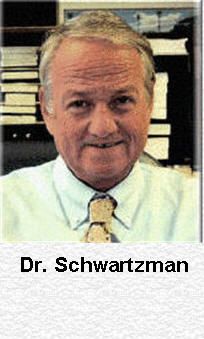 administering large bolus injections of ketamine and midazolam at up to 50 times the normal dose. But that has not stopped two U.S. doctors from pioneering the use of a “ketamine coma” in American patients treated at hospitals in Germany and Mexico.
administering large bolus injections of ketamine and midazolam at up to 50 times the normal dose. But that has not stopped two U.S. doctors from pioneering the use of a “ketamine coma” in American patients treated at hospitals in Germany and Mexico. 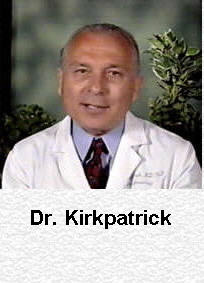 similar to LSD and PCP. Clinicians in the United States can legally give the drug to patients with RSD—also known as complex regional pain syndrome (CRPS) type I—who are under conscious sedation. In this group, relief typically lasts no more than six months, Dr. Schwartzman said.
similar to LSD and PCP. Clinicians in the United States can legally give the drug to patients with RSD—also known as complex regional pain syndrome (CRPS) type I—who are under conscious sedation. In this group, relief typically lasts no more than six months, Dr. Schwartzman said.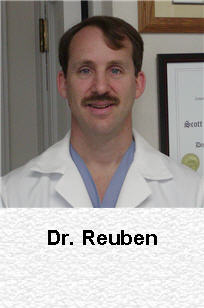 following surgery, said Scott Reuben, MD, professor of anesthesiology and pain medicine at Tufts University School of Medicine in Boston and director of pain management at Baystate Medical Center in Springfield, Mass.
following surgery, said Scott Reuben, MD, professor of anesthesiology and pain medicine at Tufts University School of Medicine in Boston and director of pain management at Baystate Medical Center in Springfield, Mass.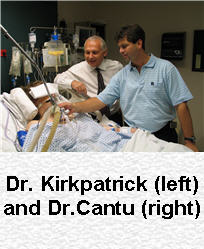 Patients pay about $20,000 for the treatment, which is not covered by insurance.
Patients pay about $20,000 for the treatment, which is not covered by insurance.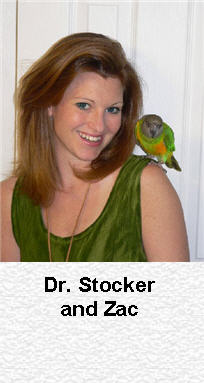 because the pain was so bad it was worth all the risk. The burning pain was constant. But when there was anything like raindrops, it felt like ice picks stabbing me.”
because the pain was so bad it was worth all the risk. The burning pain was constant. But when there was anything like raindrops, it felt like ice picks stabbing me.”